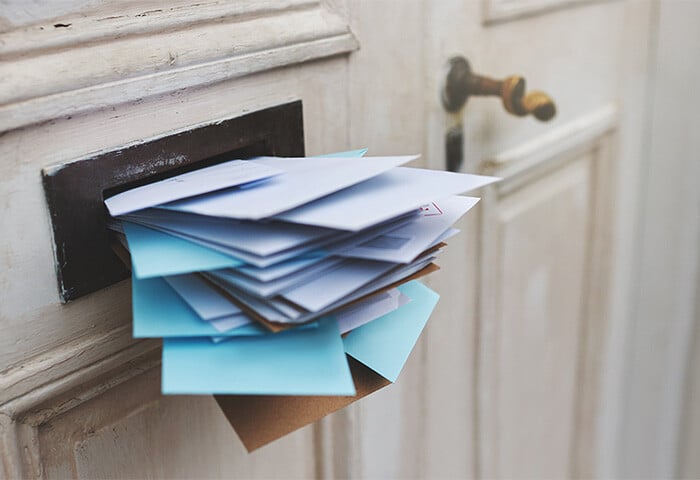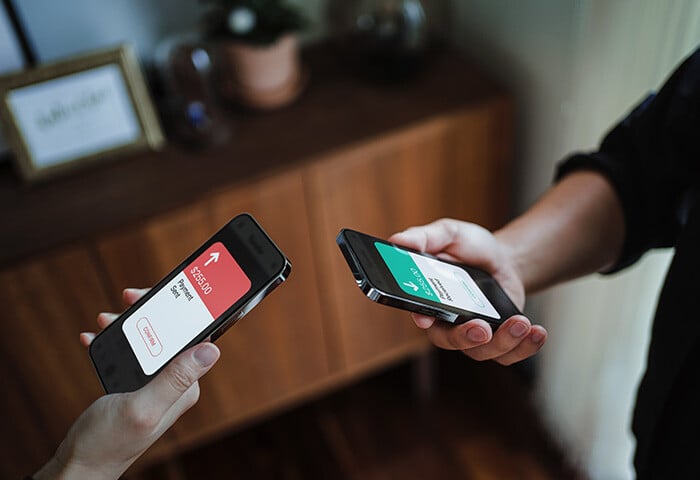Skimming
The practice of grabbing your card info from an ATM is called “skimming”. This usually involves devices that have been (rather easily) installed over the existing ATM hardware. These devices are either collected from the machine at some point or they transmit the data remotely, and fraudsters can then use the numbers they scan and collect to make a duplicate of your card. If you find yourself at a tampered machine, your use of the ATM will proceed as usual; you can get out the money you want, but the scammer is getting access to your card to presumably plunder much more. Let us now examine some popular methods of skimming.
Green doesn’t protect your green
If that blinking green plastic shell surrounding an ATM card slot was there to keep your card safe, well, it’s not doing a very good job of it. As it turns out, scammers can easily purchase a plastic shell of very similar appearance and attach it over the real green card slot in under a minute. This device simply copies the information on your card’s magnetic strip while your card is on its way into the real ATM card reader. But if it sounds like these devices are stupidly easy to install, they are also stupidly easy to uninstall. The next time you go to an ATM, before gleefully inserting your card, give a tug to the card slot casing. If it comes off and reveals another card slot identical to it, well, then consider yourself a hero. But wait…
There are also shimmers
If the big dumb green skimmers weren’t elegant enough, there are also shimmers which do kind of the same thing, but are inserted inside the card slot and are harder to detect and pretty difficult to remove. Okay, yeah, but so what if I just got shimmed, those stealthy foes still need my pin number. Oh but wait...
(Tiny) Private eyes are watching you
Since the ardent thief must also have your pin, he’s going to have installed a tiny camera above the ATM screen that’s aimed to see your fingers as you type in your pin.
Now hold up, don’t ATMs already have their own security cameras to prevent this whole mess? Yes, as one Springfield Missouri news source once noted, “The ATM itself also has its own security cameras to catch anyone trying to put a fake card reader on the machine. The problem is, police haven't caught anyone...”
So, it seems, the fraudsters have ways of circumventing this particular method of security. Masks, anyone?
(Actually, yes, masks are probably quite advisable for would-be criminals, especially those who plan on more forcibly busting into an ATM. The Guardian reports that some ATMs in England are equipped with an invisible spray gel that will unleash on the face of an ATM attacker, will show neon yellow in UV light, and stay on a thief’s face for up to five years!)
Anyway, after giving that card slot a nice tug, why don’t you also check to see if there isn’t a tiny hole in the casing above the screen where the scammer’s camera might be. You can often recognize an ATM’s own camera because it is a larger, more nicely cut circle with some glass involved, (not one that looks like the product of a stigmata stabbing), though fraudsters have also been known to install cameras behind legitimate looking round mirrors that are quite visible on the ATM. If you’re not into inspecting and probing the ATM, you can at least use some prehistoric security methods and cover your fingers as you type in your pin. But wait...
There may a pin pad overlay
If there isn’t a contraband camera installed in the ATM unit, there may be an overlay, which is another pin pad laid over the original pin pad (sensing a theme here?) These overlays log the buttons you press while, yes, still pressing down the real buttons underneath. Does the keypad feel wiggly and sluggish? Then wiggle it a bit more. You may be able to detect the overlay.
Okay so I guess I just won’t use ATMs
Well, great, but enterprising thieves can also slip similar card readers over your typical checkout card swipe machine. Oh... but, but….
Chips to the rescue!...mmmyeahno
Let’s just cut to the chase and say that where there’s a will there’s a way as far as fraud goes. When the world — ten years ahead of the US — switched over to those EMV chip cards it was supposed to help a lot, but it didn’t really. What these different card features do is force scammers to come up with new ways to get your bank data, but only delay the inevitable. Whereas old school magnetic strip cards use your actual account data in each transaction, cards with an additional EMV chip are supposed to limit fraud by generating one-time use codes. That above-mentioned shimming method is designed for stealing data from such chip cards. Fraudsters simply take the magnetic strip info and clone it onto a dummy card and then use it as a plain ol’ magnetic strip card. Sheesh, that was friggin’ simple.
And what if I just never take my card out of my pocket?
Well, if your wallet is made out of cloth or leather and you have a contactless (RFID) card inside, you could still be at risk. Some totally normal looking dude with a special app on his iPad could brush by you on the metro or in a crowded city and swipe your card info just like that. However, you can buy things to insert in your wallet that block such scamming.
Will I ever be secure?
Every new method of card security begets a new method of fraud. For example, the contactless Apple Pay method, which eliminates the need for you to present your actual card in a transaction at a store, allows scammers to easily pay with stolen card numbers without having to physically duplicate the card. But now Apple Pay will be shoring that up with an Apple card, and well…
So remember these tips
-
Always cover your fingers when typing in your pin number.
-
Pull and prod that ATM card slot and pin pad a bit if you’re feeling up to it.
-
Wiggle your card when you insert it to thwart the skimming or shimming device.
-
Don’t use random-brand, standalone ATMs; stick to ones that are physically attached to a bank. Even if you’re on a trip and want the convenience of fast cash, it’s better to seek out proper ATMs.
-
Protect your contactless card with a blocking sleeve in your wallet.
-
Pay attention to your credit card statement, if you card has been compromised, the fraudulent activity may not always be in damagingly huge amounts, but could be a sequence of smaller transactions.
And in the face of all this hopelessness…
There is still the comforting fact that your bank is on the lookout for you getting scammed. If you ultimately happen to fall prey to a fraudster despite your best efforts, well, if you have a reputable bank, they will probably detect the fraud, freeze your card, notify you, and return your money.















